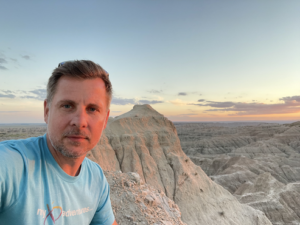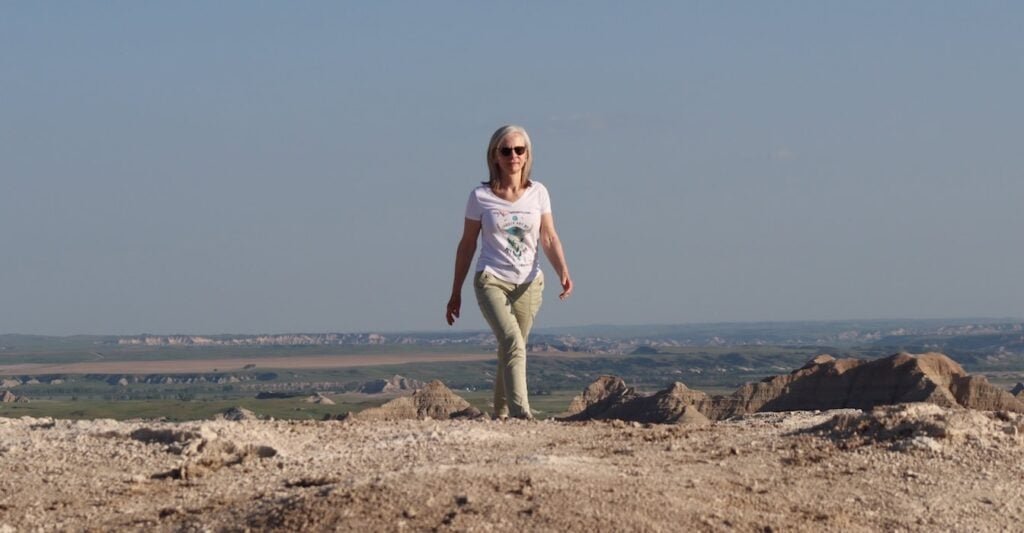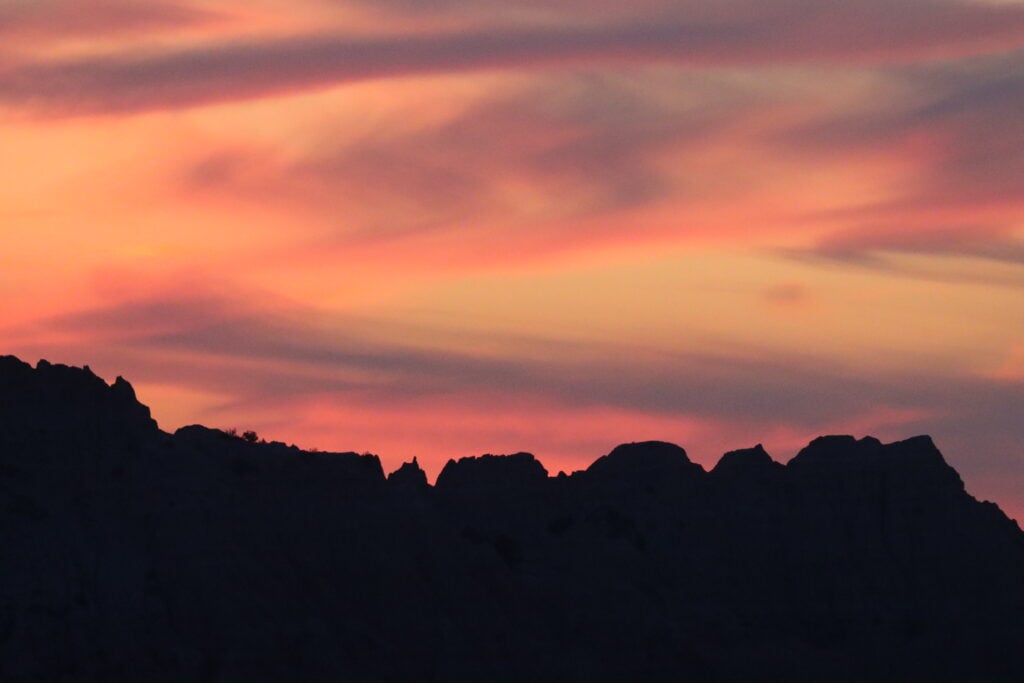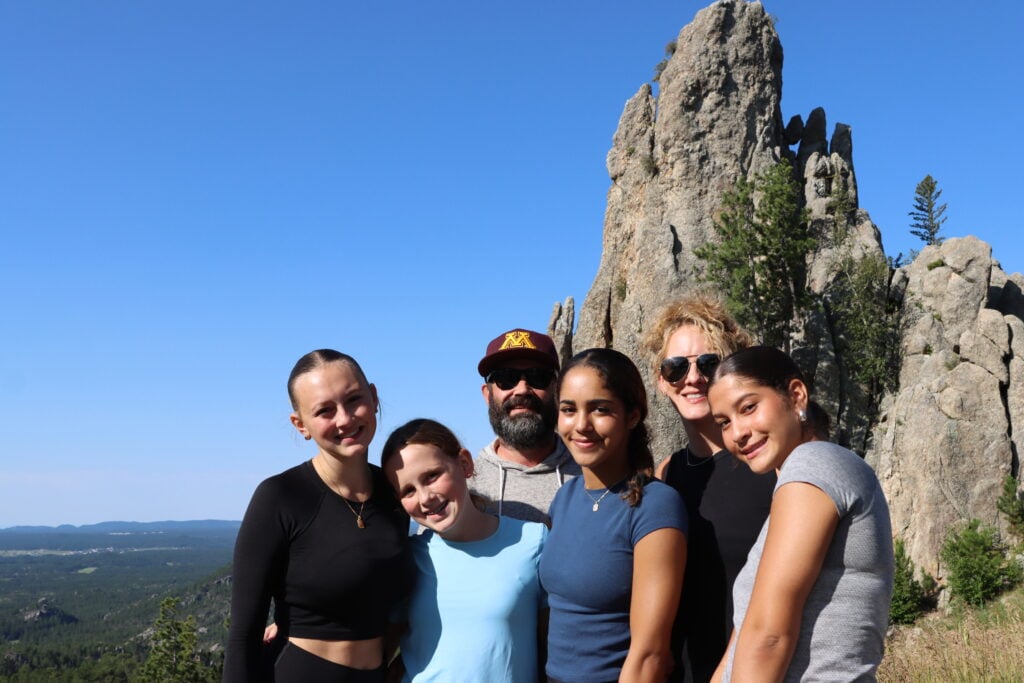
Like us on Facebook, Instagram, and Twitter, or email us for details on all of our Black Hills Tours
Facebook
Twitter
Instagram
Linkedin
Pinterest
Youtube
Experience Custer Wildlife Up Close
Nestled in the heart of Custer State Park, the Wildlife Loop Road is an unforgettable 18-mile journey through rolling hills, open grasslands, and ponderosa pine forests. It is one of the best places in North America to see a thriving variety of wildlife, including bison, elk, pronghorn, mule deer, and the park’s famous begging burros.
The Pronghorn: North America’s Fastest Mammal
🦌 Did you know? The pronghorn (Antilocapra americana) is the second-fastest land mammal in the world, reaching speeds of 55 mph—only second to the cheetah!
Though often called “antelope,” pronghorns are unrelated to African antelopes. Their closest living relative? The giraffe! Look closely at their elongated faces, and you might notice the resemblance. Its one of the most unique Custer wildlife species.
Pronghorns roam freely across Custer Wildlife Areas and are commonly spotted along the Wildlife Loop Road. Some days, they blend into the golden grasses, requiring a keen eye. But don’t worry—on most visits, you’re almost guaranteed a sighting!
Bison: The Kings of Custer State Park
The iconic American bison dominates the landscape, with over 1,500 bison calling Custer State Park home. These massive creatures can weigh up to 2,000 pounds and often create “bison jams” along the Wildlife Loop, where they leisurely cross the road.
⚠️ Custer Wildlife Tip: Stay at least 100 feet away from bison, even if they appear calm. They can charge unexpectedly, running up to 35 mph—faster than a human can sprint!
The Famous Begging Burros
Unlike other Custer Wildlife, the begging burros actively seek out visitors, hoping for a handout. These descendants of pack animals from the 1920s were once used for park excursions. Today, they roam freely and often approach vehicles along the Wildlife Loop, looking for snacks.
🚫 Do not feed wildlife! Human food can harm their health. Enjoy their friendly nature, but let them forage naturally.
Other Wildlife You May See
🦅 Bald Eagles & Hawks – Often soaring above the prairies.
🦊 Coyotes & Red Foxes – Most active at dawn and dusk.
🦌 Mule Deer & White-Tailed Deer are common throughout the park.
🐐 Mountain Goats – Occasionally spotted on rocky outcrops.
The Role of Conservation in Custer State Park
Custer State Park is not just a haven for wildlife lovers—it is also a pioneer in conservation efforts. With its 71,000 acres of protected land, the park plays a critical role in preserving the native species of the Great Plains while ensuring a sustainable balance between the Custer wildlife, tourism, and habitat management.
Bison Conservation & The Annual Roundup
One of the park’s most well-known conservation efforts is the Custer State Park Buffalo Roundup, an annual event held every September. The park’s 1,500+ bison are herded into corrals, receiving health checks, vaccinations, and population assessments. This process prevents overgrazing, maintains genetic diversity, and ensures a healthy, thriving herd for future generations.
🐂 Fun Fact: The Custer bison herd is one of North America’s few genetically pure herds, free from cattle gene mixing, making their conservation even more critical.
Preserving the Prairie Ecosystem
The rolling grasslands and pine forests of Custer State Park are home to an incredible diversity of plant and animal life. Park rangers carefully manage the ecosystem through:
✔️ Prescribed Burns – Controlled fires reduce invasive plant species and rejuvenate native grasses.
✔️ Habitat Restoration – Programs to support native prairie grasses and provide wildlife food and shelter.
✔️ Wildlife Management – Monitoring bison, elk, and predator populations to maintain ecological balance.
Threats to Custer Wildlife & How You Can Help
Despite its protected status, Custer State Park faces challenges from climate change, habitat loss, and human-wildlife interactions. Visitors can support conservation efforts by:
🚫 Not feeding wildlife – Human food disrupts natural diets and behaviors.
🌱 Staying on designated trails – Helps protect fragile plant life and nesting grounds.
♻️ Practicing Leave No Trace principles – Keep the park pristine for future generations.
💡 Want to make a difference? Support organizations like South Dakota Parks & Wildlife Foundation, which funds conservation projects across the Black Hills!
Best Time to Visit Custer Wildlife Loop Road
🌅 Dawn & Dusk – The best time for wildlife activity, as animals are more active in cooler temperatures.
🍂 Fall (September-October) – Witness the annual Custer State Park Buffalo Roundup, where wranglers drive the bison herd into corrals for health checks.
❄️ Winter (December-February) – A magical time to see bison in snow-covered landscapes with fewer crowds.
How to Experience Custer Wildlife Loop Road Like a Pro
✔️ Drive slowly (25 mph or less) – Animals frequently cross the road.
✔️ Bring binoculars – Spot wildlife from a safe distance.
✔️ Visit the Peter Norbeck Visitor Center – Learn more about the park’s ecosystem.
✔️ Book a guided tour – Enhance your visit with expert insights.
Plan Your Visit to Custer State Park
📍 Location: Wildlife Loop Road, Custer State Park, South Dakota
🕒 Hours: Open year-round, 24/7
🎟️ Entry Fee: $20 per vehicle (valid for 7 days)
📌 Looking for an unforgettable wildlife experience? Book a private guided tour with My XO Adventures for a customized adventure through the Black Hills!
Sources & References
Smithsonian Magazine – Pronghorn Speed & Evolution day!
National Park Service (NPS) – Bison Safety Guidelines
South Dakota Game, Fish & Parks – Wildlife in Custer State Park






